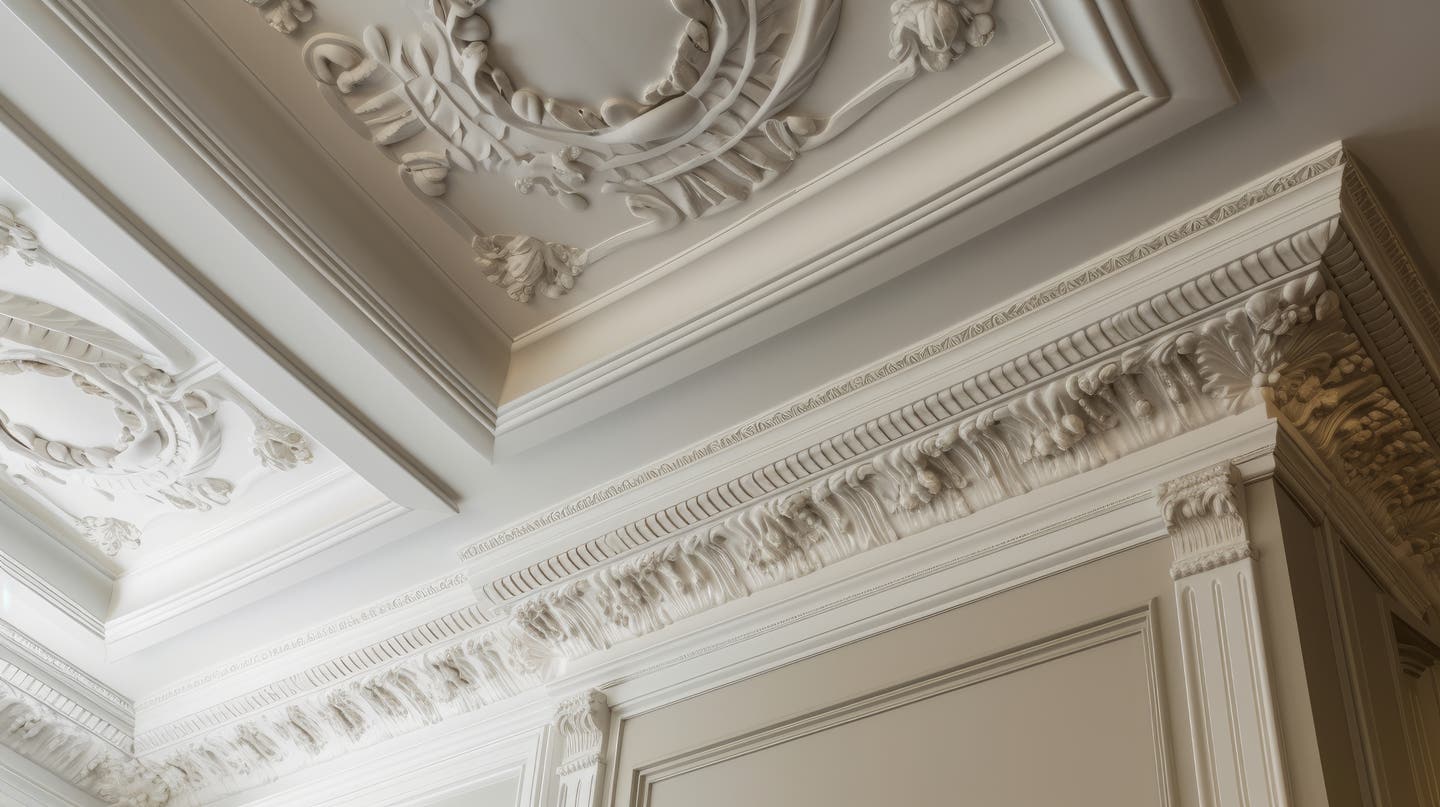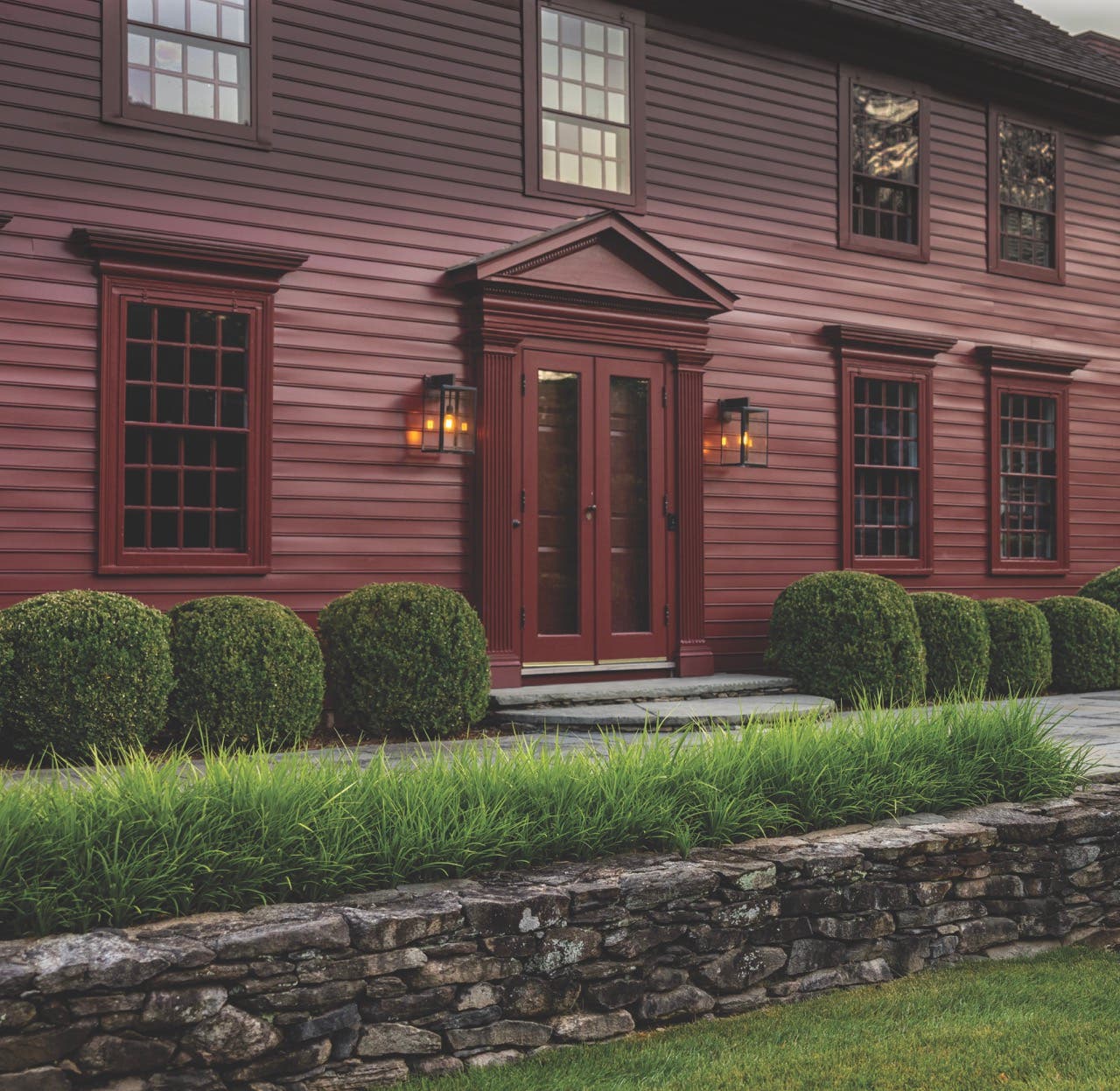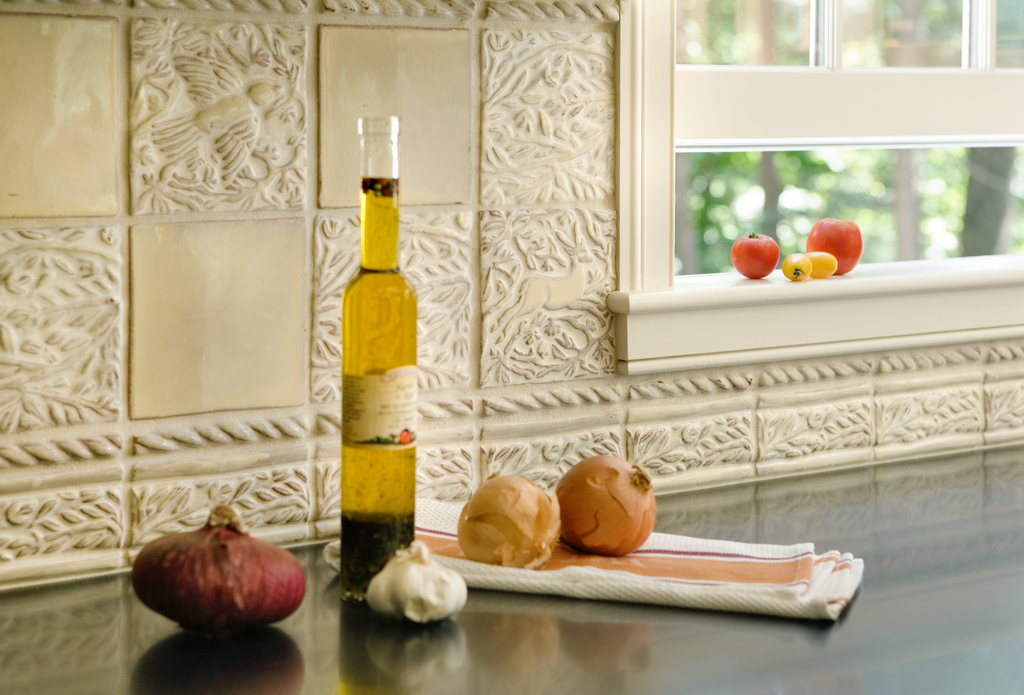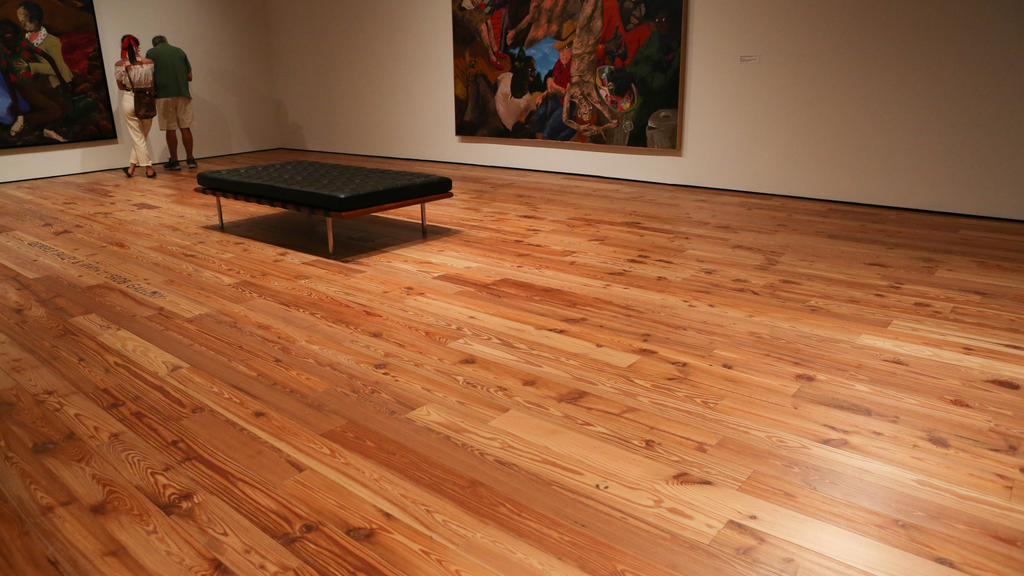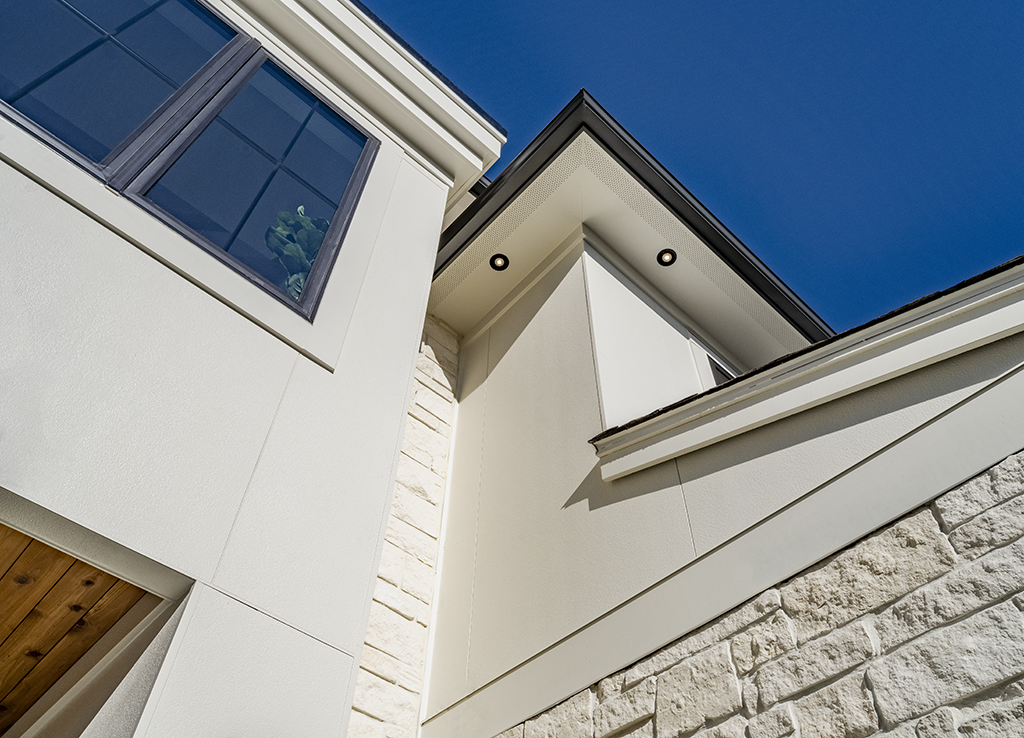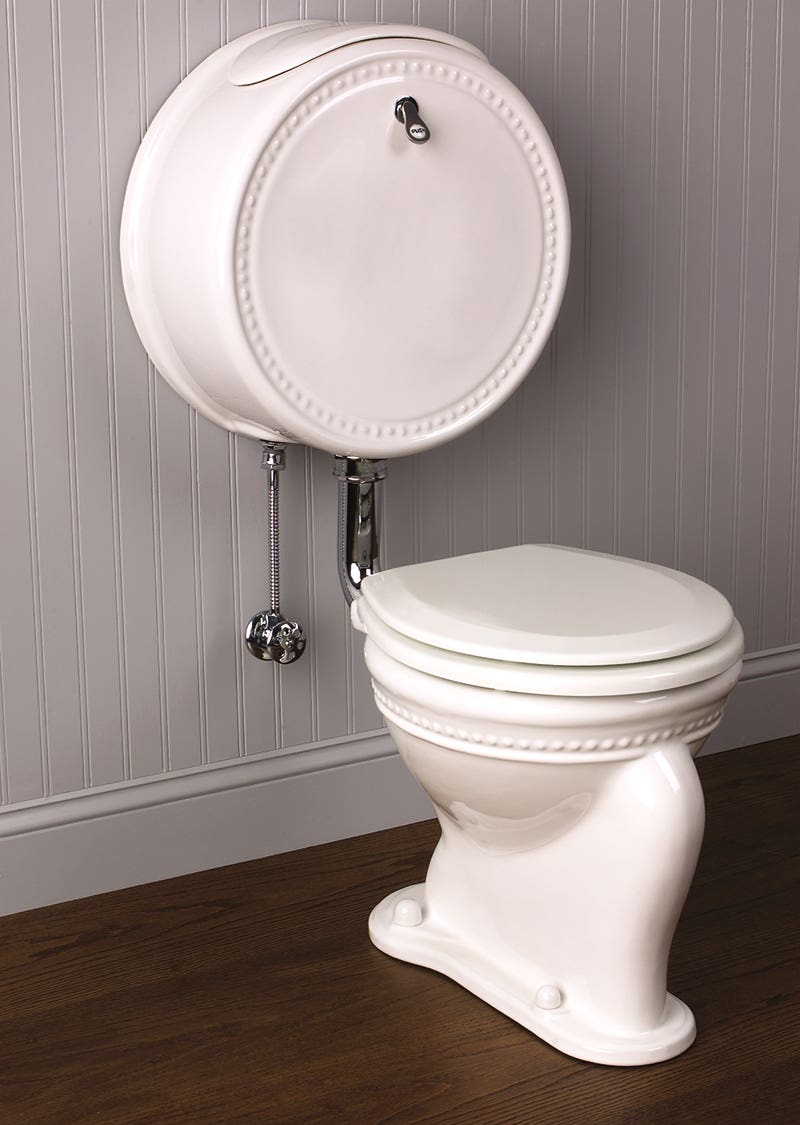
Product Reports
Fixtures For the Period Bath & Kitchen
Granted, homeowners sleep in their bedrooms, play in their playrooms and live in their living rooms, but the kitchen and the bathroom inevitably become the heart of a house, whether it's period or newly built in a period style. These essential arenas of home life are too often stinted or ignored when it comes to interior design – sacrifices to the altar of technological convenience. Yet there are numerous sources of old-style kitchen and bath appliances – restored antique items as well as expert reproductions – that offer designers period beauty and charm along with contemporary efficiency.
Range in the Home: Classic Stoves
The major kitchen appliance that has proven especially desirable in its period incarnations is the cooking range. The Good Time Stove Company of Goshen, MA, has specialized in restoring vintage cooking and heating stoves since its founding in 1973. Proprietor Richard M. "Stove Black" Richardson has seen important shifts in his customer base over the decades. "I started by strictly selling kitchen ranges that could burn wood or coal," he says, "but the market for solid fuel began drying up in the '80s. So I started converting stoves to gas and electric – converting the body of a vintage stove to gas on top and an electric oven underneath – which most people prefer. We can offer customers from four to six burners, we can offer them a griddle and we can put in a convection oven. I get some very serious cooks, but I also get people who say, 'I don't cook. I'm buying the stove because I'm restoring my home and this would have been in my home, so this is what I want.'"
Another important source of restored period stoves is the Antique Stove Hospital in Little Compton, RI. Company President Emery Pineo has witnessed what he calls "massive changes" in the market during the 30 years he's been in business. "We used to deal almost entirely with wood and coal ranges – people wanted a wood-burning kitchen range because they had grandma's stove and they were nostalgic,” he says. “But now they're calling because they're afraid they're not going to have oil next winter. I just did a stove for a woman in Vermont whose husband is handicapped. She called me after she got her wood-burning kitchen range set up and she said, 'He's warm for the first time in a year.'"
The trend of new-house construction in period styles has played a significant role in the expansion of the vintage-stove market for both businesses. Richardson estimates the split between owners of old houses and owners of new old houses to be "about fifty-fifty. We cater to customers who are either restoring their home or putting the stove in a high-end new home that is a reproduction of a Victorian. But they're also going into ranches, new timber-frame houses, log homes – it's a pretty large spectrum. It's not just an old house or a new Victorian house."
In this regard, Pineo's experience echoes Richardson's. "One part of my business," he explains, "is people who buy a vintage house that has an old stove down in the cellar, and they're bringing the stove in for a rebuild – they want them restored and put in their kitchen for heat. But there are also a lot of people who are building a second home or a cottage, and they design the kitchen for the stove. I get lots of calls from these people who buy a range and then design a kitchen for it. They're very big on 1920s-style kitchen ranges. Stove construction was perfected by about 1928, so a lot of the earlier kitchen ranges have no insulation or thermostat. We put in an insulated, stainless-steel electric oven and broiler, and add four gas burners and a thermostat. There's a fellow in New Hampshire who specializes in converting ranges; I sell people the range, deliver it to him and he does the conversion."
Rehabilitated antique stoves are not cheap, and the investment made in these products is often part of their commitment to a total period kitchen design, as Pineo described. Sometimes these kitchens are styled with an architect, but in Richardson's experience, the homeowner's vision tends to lead. "Usually it's the homeowner going to the architect and saying, 'This is the style that I'm looking for. I don't want something new,’” he says. “My customers are really sticklers, they love their homes with a passion, and they're willing to commit time, energy and money to create a little piece of the past. I sold a beautiful Dellinger range to a woman who wrote me an e-mail and said, 'I just wanted to let you know what a beautiful piece of art I purchased from you.' That says it all!"
That Sinking Feeling: Historic Sinks
Another essential component of the old-fashioned kitchen is the sink. A-Ball Plumbing Supply of Portland, OR, has been a vital source of reproduction plumbing parts for both the kitchen and the bath since the late 1970s. Owner Jan Frutiger recalls those do-it-yourself days when "a lot of the decorative restoration plumbing was hand-thrown pottery basins and un-lacquered brass faucets and so on. Now manufacturers go back to their own libraries and are making faucets that are fairly reminiscent of what they produced 80 years ago. Also, in the early ’80s you almost couldn't get your hands on fired-clay farmhouse sinks for the kitchen; now a number of them have come to market, and their price has come down somewhat – they're not inexpensive but they're not the break-the-bank item they were."
Signature Hardware of Erlanger, KY, which has been operating since 1999, has also become an important supplier of reproduction plumbing appliances. Spokeswoman Rachel Turner has been particularly impressed by the enthusiasm for the firm's line of copper kitchen sinks. "People really like them,” she says. “They're beautiful pieces but also functional – you can use them for everyday things. And they're available in many styles – you can get a plain one, something more rustic for a cabin-type setting or one that's very ornate and detailed."
Although Frutiger has seen a growing sophistication in architects who design period-style kitchens, she still regards the profession as playing catch-up with the goals of homeowners. "Some in the architectural community are very much on board,” she says, “but with others, it's like they have a formula for grabbing the plain vanilla stuff off the shelf and specing that. They'll put a lot of energy into specifying woodworking and windows and hardware, but plumbing can sometimes be the stepchild in the process." This mixed bag is most apparent when her customers own new houses built in period styles: "Only the ones that are truly done well get the appropriate fixtures; the rest get the stuff off the shelves. Our products go predominantly into old homes that are being restored."
How Period is Period?
Mac the Antique Plumber in Sacramento, CA, has been a respected supplier of antique and reproduction plumbing items for nearly 30 years, and owner Bryan McIntire has seen the market change in matters of taste. "Years ago, the more Victorian and ornate the item, the more desirable it was,” he says. “Now tastes have changed to simpler styles: Art Deco and Arts and Crafts are very popular." During this time, his customer base has shifted to about a 50-50 division between owners of old houses and new-old houses, but, unlike Frutiger, McIntire has seen a greater expertise among architects. "I don't get conflicting architectural approaches with customers,” he says. “We do get people who come in with plans, but a lot of them have really studied and made decisions about what they want in the bathrooms and kitchens. They've decided ahead of time what luxuries and appliances they want."
Instead, he has observed homeowners drawing the line as to just how period their period kitchen should be. "If they own an older house, many times they ask questions to try to keep it in the old-style look,” he says. “But people want the luxuries. They don't want to keep the old sink if they can't put the garbage disposal in it. They want a more modern kitchen faucet, like the ceramic-disc faucet that we sell, which is modern internally but has a very authentic look. Most people don't want to live like they're in the 1920s. In many cases they're not into exact authenticity – kitchens especially. I sell way more bathroom sinks than kitchen sinks. In my experience, there's more frequency in bathroom remodeling. Kitchen remodeling is often just little dress-ups – changing the knobs, refinishing the cabinets and putting new linoleum on the floor. If there is a full remodel – changing the kitchen sink and appliances and everything – it's done once in the person's lifetime stay in the house. But bathroom remodels can happen every six to 10 years."
The bathroom has in fact proven an eager market for reproduction appliances. Turner notes that the best sellers at Signature Hardware have been "clawfoot tubs and the clawfoot-tub faucets. A lot of people who restore an old home like the look of a clawfoot tub, and their plumbing was already set up for one, but the tub they have is damaged. They want to keep that vintage look, and they don't want to have to redo all of their plumbing, so they get a new tub from us in that authentic style. Our target customer is usually someone who's looking for the conveniences of the new – thermostatic technology with temperature and pressure-balance control – but they're also looking for the vintage style." Although she had no data on hand regarding the percentage of customers with vintage houses as opposed to new construction, she has seen buyers set out to improve upon the designs of their architects. "Sometimes people will share with us that they love the way their house is built but they really hate the faucets that were put in, and they want to rehab all the bathrooms,” she says. “And people will look for something for six months and just not find it, and then they come across us and say, 'Wow! I never thought that finding a toilet seat would be the momentous event of the year!'"
DEA Bathroom Machineries of Murphys, CA, has been selling antique and reproduction plumbing parts, appliances and accessories since 1976. “In the last couple of years,” owner Tom Scheller notes, “antique accessories – soap dishes, towel bars, lighting fixtures, all the antique items that would go in the bathroom, or even in the rest of the house – have fallen off considerably. A lot of small antique stores are now selling their hardware items so cheaply on the internet that the stores can't keep up." As a result, only about 20 or 30 percent of the firm's total sales are antique items. "Our antique sinks and toilet bowls are still going well," he says, "but our reproduction Lydia toilet, a copy of a 1910 toilet, is also quite popular. We offer it as a low-tank or as a high-tank, although those have slowed down some. The bread and butter of the business is still the standard reproduction items – shower rings, tub faucets. But the Crane parts have also been a big item for us, both reproduction and restored. Crane is a manufacturer that's still in business, but they've stopped making parts for their faucets. So we've taken on the re-manufacturing of their parts for faucets made before 1940.”
Like Turner, Scheller cannot reliably trace the extent to which his customers' homes are vintage as opposed to newly built; but regardless of the type of home, he too has seen the mixed effectiveness of architects described by Frutiger. "We don't deal with a whole lot of architects," he comments. "Usually, if the homeowner is really adamant about building a historic home, the architect is going to be on the same page, and they'll work with them on that. But sometimes they can't find an architect that's knowledgeable. We've seen historic preservations where they do a beautiful job on the common areas, but the bathroom just has Home Depot stuff."
That fate need not befall bathrooms or kitchens, thanks to the dedicated suppliers of vintage and reproduction appliances. Knowledgeable and reliable sources of high-quality, period-appropriate stoves, sinks, tubs and toilets have arisen to meet the needs of a passionate and growing market. The rest is up to the homeowner.




